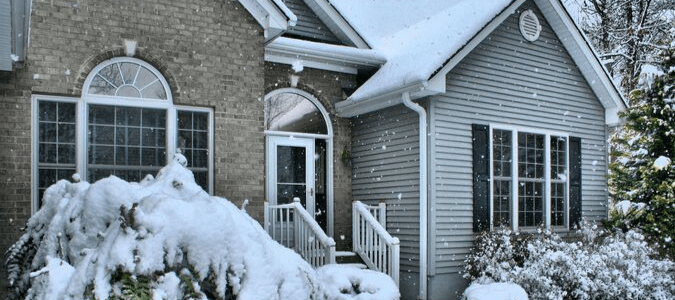
Here in Texas, we are lucky that our winters are relatively mild. However, we do have those nights where it can get a bit chillier than we’re accustomed to. When it drops below freezing, many homeowners start to wonder: Will pipes freeze at 32 degrees? Water freezes at 32 degrees, so technically that is the temperature at which it becomes possible for pipes to freeze as well. That said, it’s not quite that simple.
Pipes can freeze at 32 degrees or below, but it will take a sustained period of time for this to happen. In other words, a pipe needs to be at freezing temperatures for at least half a day before homeowners have to worry about any freezing occurring. And, generally speaking, the temperature needs to be well below 32 for at least that length of time before freezing becomes likely.
While you may assume that homeowners in the North would be more vulnerable to frozen pipes, home builders have also prepared pipes in warmer climates for these freezing winters. Our pipes are surrounded by insulation, which keeps them warm and prevents them from freezing in most cases. On the other hand, the temperate weather here in Texas has led many builders to install pipes outside of the home, which makes these important plumbing components more likely to freeze and burst. Attics, crawl spaces and outside walls are also places where pipes may potentially freeze and burst if adequately protected from frigid temperatures.
Because our below freezing nights are rather rare, homeowners usually don’t know signs of freezing pipes and whether or not a frozen pipe will burst. Fortunately, we will provide you with guidance in this post for your frozen pipe questions, including explaining how to thaw frozen pipes and how to prevent your pipes from freezing next time around.
But, in order for these questions to be relevant, you have to first know the signs of frozen pipes.
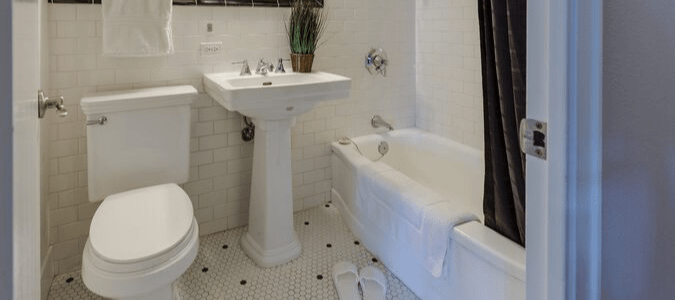
Signs Of Frozen Pipes
There are three very obvious indications that your pipes may be frozen:
- There is no water coming out of your sink. If you paid the water bill, yet your shower or sink just won’t turn on during the coldest days of the year, water could be frozen in your pipes.
- You’re hearing weird dripping noises in your walls. That could be the sound of your pipes defrosting and the melting ice starting to drip. However, this could also mean you’re having another common plumbing problem, so if the noises persist for longer than a day, you’ll want to call a licensed plumber.
- Your pipe bursts. When you are ankle-deep in water, it goes without saying that you are in the middle of a plumbing emergency. As you may have already guessed, this is a big and costly problem and you’ll want to take action quickly to soften the blow. Shut off the main water supply to your house to prevent more flooding and call in the experts and your insurance provider. Move whatever furniture and valuables you can out of your home to prevent further damage.
Because a burst pipe is a costly investment, you’re probably wondering if frozen pipes always burst or if you can rest a little easier knowing you may not fall victim to one of these accidents.
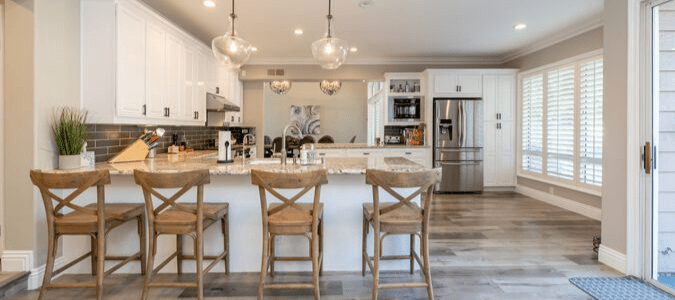
Do Frozen Pipes Always Burst?
Before you get too worried, you should know that frozen pipes do not always burst. There is a common misconception that the frozen water in pipes is what causes this kind of accident. In reality, it’s the pressure within the pipe that causes it to burst. When water molecules freeze, they expand. As the ice starts to expand, it pushes the liquid water that’s in the pipes towards the nearest faucet. If the water has nowhere to go, pressure will start to build within the pipe. When the faucet isn’t turned on for a long period of time and the pressure becomes too high, the pipe bursts. That’s why you always hear that you should turn your faucets on ever so slightly during sub-freezing temperatures. This constant dripping allows water to move through your pipes and relieves pressure points.
Most of the time, pipes can withstand the expanding ice. This can be both a good and a bad thing for homeowners. It’s not uncommon for metallic pipes to expand during a cold spell and then break a few months later. In the most severe cases, frozen pipes can expand and burst during a dry spell. But these are only the most severe cases.
Consistent wear and tear could also cause damage. Consistent maintenance of the plumbing in your home can dramatically reduce incidents of frozen and burst pipes.
Although burst pipes are the worst-case scenario when it comes to frozen pipes, you still want to wake up with a functioning shower, sink and toilet. So, how can you prevent frozen pipes?
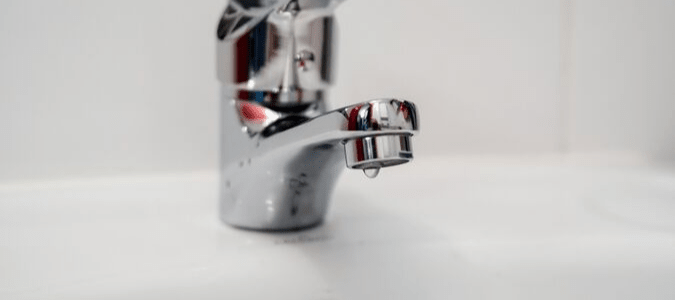
How To Keep Pipes From Freezing In Crawl Spaces And Within The Walls
Homeowners who thaw out frozen pipes and take action to prevent freezing shouldn’t have to worry about pipes bursting, especially in parts of the country where temperatures rarely stay below freezing for long. Luckily, there are many options for keeping pipes warm throughout the house and elsewhere on your property. If you plan on going on a trip, the following steps can be a great way to prepare your house for an extended vacation.
Don’t Mess With The Thermostat
Although it can be tempting to save a little money during a cold snap by turning down the heat in your home, doing so can lead to frozen water in pipes. Despite the temperature outside, try to keep your home at least 55 degrees.
Opening Cabinets
If you have pipes within the walls, preventing them from freezing can be as easy as opening cabinets. This allows more warm air to circulate through the home and introduces heat to the pipes, which are usually located within cabinets or just behind them.
Apply Heat Manually
If you can see pipes on the inside of your cabinets, you can also apply a hot water bottle or heating pad around the pipe to keep it warm. Do not use an open flame to warm up the pipes, however. Warm air coming from a hairdryer or even towels soaked in hot water will do.
If your pipes are visible and located outside, warm towels or heating pads may also help keep pipes from freezing. Cover up the outside spigots to prevent cold air from reaching the pipes this way.
Space heaters throughout the house or in a crawl space may also increase temperatures and prevent pipes from bursting. Keep in mind it is not recommended that you leave space heaters or heating pads on all night because they can become a fire hazard. Some manufacturers make these products with timers, so if you would like to use them at night, make sure you have these devices programmed to turn off at some point.
Leave Faucets Dripping
While it can feel awkward to leave the faucets dripping throughout the house, it’s a smart way to prevent freezing. Why? Because, as we already mentioned, this can encourage water and heat to move through the pipes, which reduces your chances of getting blockages.
If you do turn on the water in your sinks and tubs during cold weather, leave both hot and cold faucets dripping. Though it seems counterintuitive, hot water actually freezes faster than cold water, so it’s especially important to let hot water flow and move. This solution may feel like a waste of water, but it is far less wasteful than letting the pipes burst and flood your home.
Insulate Your House
If you are like most homeowners and plan on living in your home long-term, it’s probably worth the investment to properly insulate the home and areas around your pipes if they aren’t already protected. Space heaters, dripping faucets and the other solutions mentioned above are short-term fixes. Proper insulation is the best way to keep water flowing during every season. Also, when your home is properly insulated, it helps you save money on costs to heat and cool your home.
While warming and thawing frozen pipes isn’t hard to do when your pipes are inside the home or the crawl space, it can add a layer of difficulty when your pipes are located outside and underneath the ground. If you’re in this situation, it’s time to call in the professionals.
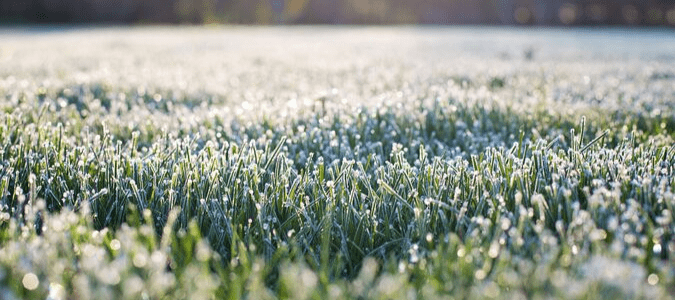
How To Thaw Frozen Pipes Underground
The process for thawing frozen pipes underground will differ based on what your pipes are made out of. Metallic pipes freeze more quickly than other types of pipes and can be thawed with a stream of warm water to the pipe. However, keep in mind that these pipes also slower to thaw out. If the warm water doesn’t work, or you’d rather have a more rapid, easy solution, plumbers and other professionals have other tools at their disposal, including introducing an electric current to the area.
While other types of underground pipes react positively to warm water as well, more often than not your quickest and easiest option is to call in a professional who can use a pipe thawing machine to get your water up and running again.
ABC Can Keep Your Plumbing Working Year-Round
If you’ve found yourself in a situation where you have frozen pipes, or even if you’re worried about the potential of frozen pipes, often the best move is to call in a professional. The licensed plumbers at ABC Home & Commercial Services are well versed in all different types of pipes and can help you, no matter where your pipes are located. With ABC’s help, even the most pressing plumbing emergencies will be resolved quickly. You can rest assured, knowing that that the work will be high-quality and that you won’t have to worry about future disruptions to your regular routine because of a plumbing problem.
